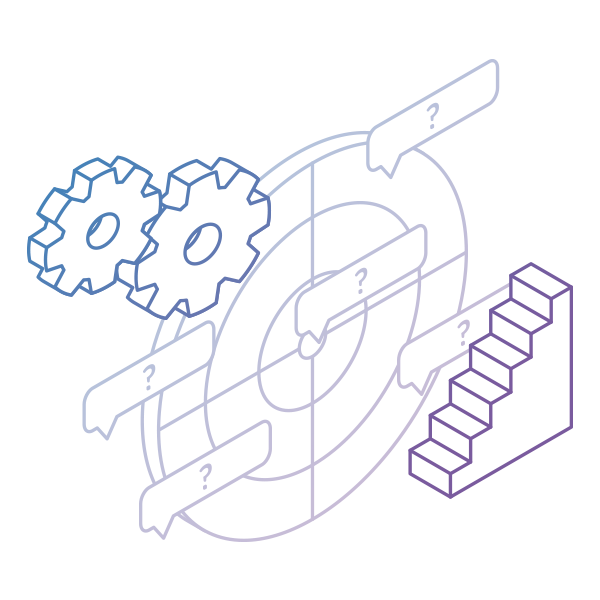What Is the PDCA (Plan-Do-Check-Act) Cycle?
Explained briefly, the Plan-Do-Check-Act cycle is a model for carrying out change. It is a simple four-stage method that enables teams to avoid recurring mistakes and improve processes. It is an essential part of the Lean manufacturing philosophy and a key prerequisite for continuous improvement of people and processes.
First proposed by Walter Shewhart and later developed by William Deming, the PDCA cycle became a widespread framework for constant improvements in manufacturing, management, and other areas.
Now that we've explained the PDCA's meaning let’s explore the topic further and learn more about this problem-solving model.
Brief History of PDCA
The American statistician and physicist Walter Shewhart is considered the father of PDCA. He was passionate about statistical analysis and quality improvement, and he built the foundation of PDCA recorded in numerous publications.
At first, he developed a 3-step repeating cycle for process improvement also known as "the Shewhart cycle". The three phases of this cycle were:
- Specify
- Produce
- Inspect
Years later, inspired by Shewhart’s ideas, William Deming expanded the model into a learning and improvement cycle consisting of the following steps:
- Design
- Make
- Sell
- Test
 Image Credit: Lean Enterprise Institute
Image Credit: Lean Enterprise Institute
This model was redesigned by the Japanese Union of Scientists and Engineers (JUSE) in 1951 and became what we know today as a PDCA cycle.
What Are the 4 Steps of the PDCA Cycle?

PDCA cycle is an iterative process for continually improving products, people, and services. It became an integral part of what is known today as Lean management. The Plan-Do-Check-Act model includes solutions testing, analyzing results, and improving the process.
For example, imagine that you have plenty of customer complaints about the slow response rate of your support team. Then you will probably need to improve the way your team works to keep customers satisfied. That is the point where PDCA comes into play.
Let’s take a closer look at the four stages of the PDCA process.
Step 1. PLAN
 PLAN stage of PDCA cycle
PLAN stage of PDCA cycle
At this stage, you will literally plan what needs to be done. Depending on the project's size, planning can take a major part of your team’s efforts. It will usually consist of smaller steps so that you can build a proper plan with fewer possibilities of failure.
Before you move to the next stage, you need to be sure that you answered some basic concerns:
- What is the core problem we need to solve?
- What resources do we need?
- What resources do we have?
- What is the best solution for fixing the problem with the available resources?
- In what conditions will the plan be considered successful? What are the goals?
Keep in mind you and your team may need to go through the plan a couple of times before being able to proceed. In this case, it is appropriate to use a technique for creating and maintaining open feedback loops, such as Hoshin Kanri Catchball. It will allow you to collect enough information before you decide to proceed.
Step 2. DO
 DO Stage of PDCA cycle
DO Stage of PDCA cycle
After you have agreed on the plan, it is time to take action. At this stage, you will apply everything that has been considered during the previous stage.
Be aware that unpredicted problems may occur at this phase. This is why, in a perfect situation, you may first try to incorporate your plan on a small scale and in a controlled environment.
Standardization is something that will definitely help your team apply the plan smoothly. Make sure that everybody knows their roles and responsibilities.
10 Years Kanban Experience In 1 Free Book.
Project Manager's Guide to Kanban
Step 3. CHECK
 CHECK stage of PDCA cycle
CHECK stage of PDCA cycle
This is probably the most important stage of the PDCA cycle. If you want to clarify your plan, avoid recurring mistakes, and apply continuous improvement successfully, you need to pay enough attention to the CHECK phase.
This is the time to audit your plan’s execution and see if your initial plan actually worked. Moreover, your team will be able to identify problematic parts of the current process and eliminate them in the future. If something goes wrong during the process, you need to analyze it and find the root cause of the problems.
Step 4. ACT
 ACT stage of PDCA cycle
ACT stage of PDCA cycle
Finally, you arrive at the last stage of the Plan-Do-Check-Act cycle. Previously, you developed, applied, and checked your plan. Now, you need to act.
If everything seems perfect and your team managed to achieve the original goals, then you can proceed and apply your initial plan.
It can be appropriate to adopt the whole plan if objectives are met. Respectively, your PDCA model will become the new standard baseline. However, every time you repeat a standardized plan, remind your team to go through all steps again and try to improve carefully.
Implementing the PDCA Cycle: Best Practices to Consider
Implementing the PDCA (Plan-Do-Check-Act) cycle effectively requires attention to detail and a structured approach. To get the most out of it, there are a few good practices to follow for each stage and overall. Let’s briefly review them.
Strong Planning Foundation
Identify the process you want to improve and outline the problems that need to be solved. Once defined, set clear SMART goals to guide your team and ensure focus and consistency. Gather data to support the planning process, ensuring decisions are based on evidence rather than assumptions. You can use tools like root cause analysis, fishbone diagrams, and SWOT analysis to understand the problem and its context.
Lastly, involve all key stakeholders in the planning process to gather diverse viewpoints and ensure buy-in.
Effective Do Stage
To minimize risks, test the proposed changes on a small scale before rolling them out company-wide. Ensure that you have all necessary resources, including time, budget, and, most importantly, people, to effectively implement the planned changes and achieve desired results.
Consistent Check Phase
Don’t just collect data; analyze it. Define critical for your process metrics to measure the impact of the implemented changes and whether they are delivering the expected results.
Actionable Act Stage
If the changes are successful, document and integrate the new standard operating procedures into regular workflows. If the changes did not meet expectations, analyze why they failed and what can be improved.
Either way, as the PDCA cycle is an iterative method, don’t solely rely on the learnings from this one-time round. Apply the most critical outcomes in the next session to enhance operational performance and refine the approach each time.
Bonus Tips:
- Ensure top-level management support.
- Share lessons learned with all employees.
- Don’t stop after the first run of the cycle. Instead, install it as a recurring task in your team and organization’s operations for continuous improvement of your processes.
- Leverage digital tools and software to facilitate data collection, analysis, and tracking of PDCA cycles.
Why Is PDCA Important for Your Business?
The PDCA methodology is widely used for problem-solving and to create quality process improvements. By deploying this model, organizations aim to enhance their internal and external processes by eliminating any issues along the way of the work process.
The cyclical nature of this model allows teams to identify and remove defects early in the process and restart the cycle until the desired outcome is reached. This increases efficiency and eliminates ineffective elements until the optimal solution can be identified.
Because of the continuous approach of PDCA, organizations can use this model to gather relevant information before considering whether to progress with a plan or make improvements. This data-driven approach provides a ground basis for organizations’ continuous improvement of processes, products, services, and people.
When to Use the PDCA Cycle?
A specific characteristic of PDCA is that it is relatively versatile. This trait of the cycle allows it to be used across various businesses, organizations, departments, and even individual teams. There is no limitation in terms of its implementation, and it could be applied in the following scenarios:
- Developing a new product or service
- Optimizing current processes or products
- Kicking off a new process improvement project
- Exploring new opportunities for continuous improvement
- Implementing change
- Detecting process issues and working toward removing them
Real-Life Examples of Companies Using PDCA
Example #1: Nestlé
Reducing waste in all aspects of work is an all-time mission for Nestlé. To respond to this message, the company successfully rolled out the concept of Lean management. Furthermore, they introduced the Kaizen method to make sure that everyone in the company meets the idea of continuous improvement. Following the principle of Kaizen that every slight improvement should be made to increase efficiency and reduce costs, the company implemented the PDCA cycle to provide guidelines. (Source: TheGemba.com)
In addition, Nestlé Waters is an example of how techniques such as Value Stream Mapping (VSM) can help illustrate the flow of materials and information from raw material to the final product. As a result of implementing this process, the bottling plant has experienced a significant increase in its process efficiency.
Example #2: Lockheed Martin
Lockheed Martin operates in the aerospace industry and is a bright example of how the Kaizen methodology brings results to a company's operations. Implementing the PDCA cycle has standardized the projects and increased the quality of the products and services by targeting a problem and solving it through multiple iterations. Improvements were noticed in the period 1992-1997 when the company made 38% reduction in manufacturing costs, 50% reduction in inventory, and a reduction in delivery time from 42 to 21.5 months. (Source: 6Sigma.com)
Example #3: Nike
Nike embraced Lean manufacturing with the belief that this continuous improvement philosophy is the foundation of their advanced sustainable manufacturing and empowering their workforce. To improve the quality of work conditions and deliver the highest-quality product while eliminating non-value-added activities, Nike implemented the PDCA cycle as part of their process improvement training. (Source: OpEx Learning)
Continuously Improving through PDCA
The PDCA cycle is a simple but powerful framework for fixing issues on any level of your organization. It can be part of a bigger planning process, such as Hoshin Kanri.
The repetitive approach helps your team find and test solutions and improve them through a waste-reducing cycle.
The PDCA process includes a mandatory commitment to continuous improvement, and it can have a positive impact on productivity and efficiency.
Finally, keep in mind that the PDCA model requires a certain amount of time, and it may not be appropriate for solving urgent issues.
What Makes the PDCA Cycle Different from Other Change Management Methods?
What Is the Difference between PDCA and Six Sigma?
Six Sigma is a quality and process improvement approach that provides organizations with a set of tools and techniques to improve work performance and increase the quality of products and services. One of the tools included in that toolset is the PDCA cycle.
While Six Sigma provides the framework for determining what is slowing the process, methods like PDCA explain the steps to identify and eliminate issues.
What Is the Difference between PDCA and PDSA?
PDCA stands for "Plan-Do-Check-Act", whereas PDSA is for "Plan-Do-Study-Act". Even though these two 4-step models are designed to bring improvements into processes, the difference between them is one stage in each cycle.
At the "Check" stage in PDCA, the team needs to audit its plan’s execution and see if its initial plan worked. In contrast, the "Study" stage in PDSA aims to analyze in depth the results of any change applied at each step, ensuring long-term process improvements. Either way, you can use both models by studying and checking the results obtained from tests.
What Is the Difference between PDCA and Kaizen?
Both PDCA and Kaizen strive for continuous improvement through small, incremental changes and creating an organizational culture of Lean thinkers and problem-solvers. The developed Kaizen methodology includes doing small experiments and monitoring results, then adjusting when new improvements are suggested. To apply this concept in practice, the PDCA cycle provides a framework to promote improvements continuously.
What Is the Difference between PDCA and Total Quality Management (TQM)?
TQM is a broader management approach focused on long-term success through customer satisfaction and employee engagement. It is applied organization-wide and requires a cultural shift, where quality becomes a core value. TQM incorporates various tools and methods, including the PDCA's philosophy.
We offer the most flexible software platform
for outcome-driven enterprise agility.
Related Articles





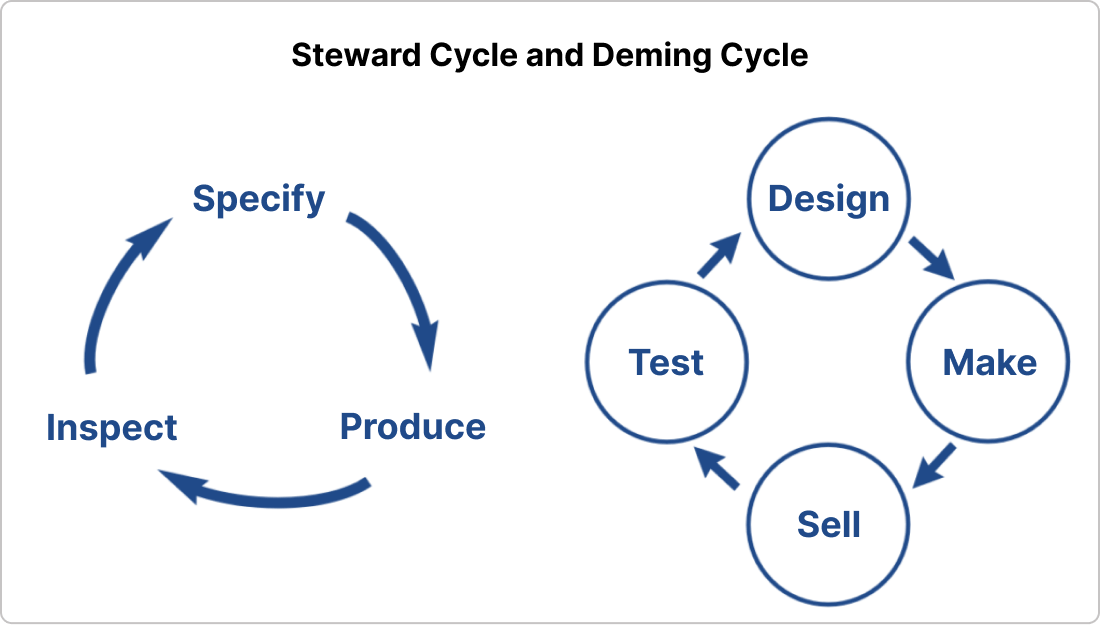 Image Credit:
Image Credit: 
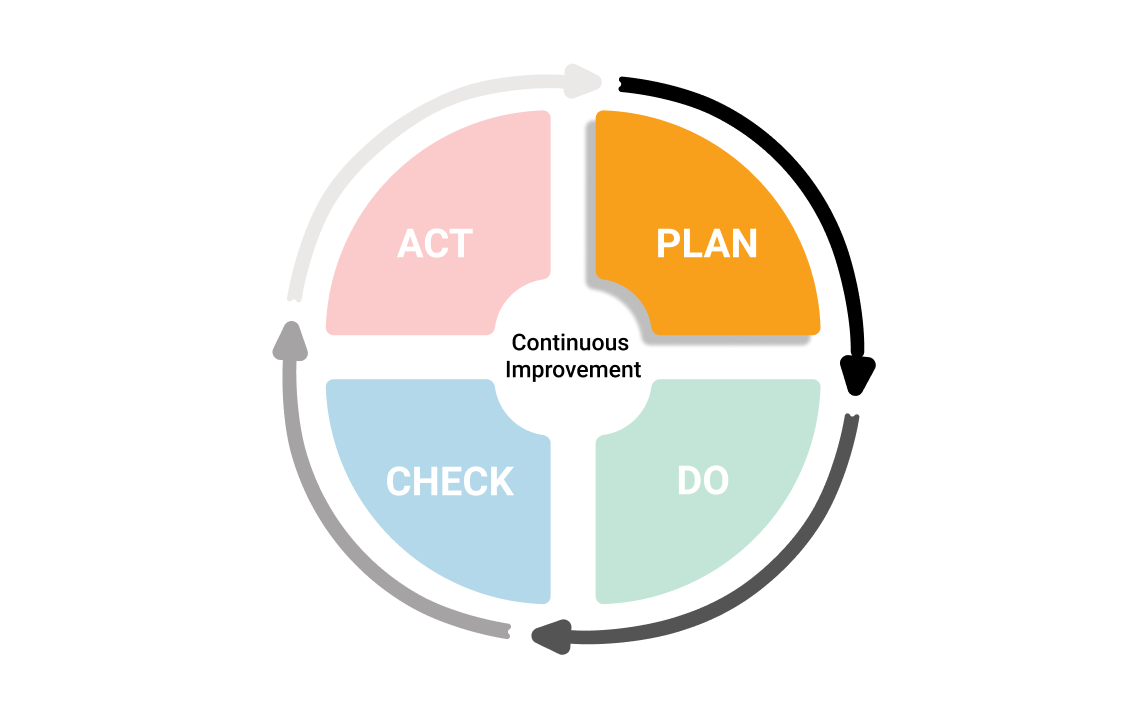 PLAN stage of PDCA cycle
PLAN stage of PDCA cycle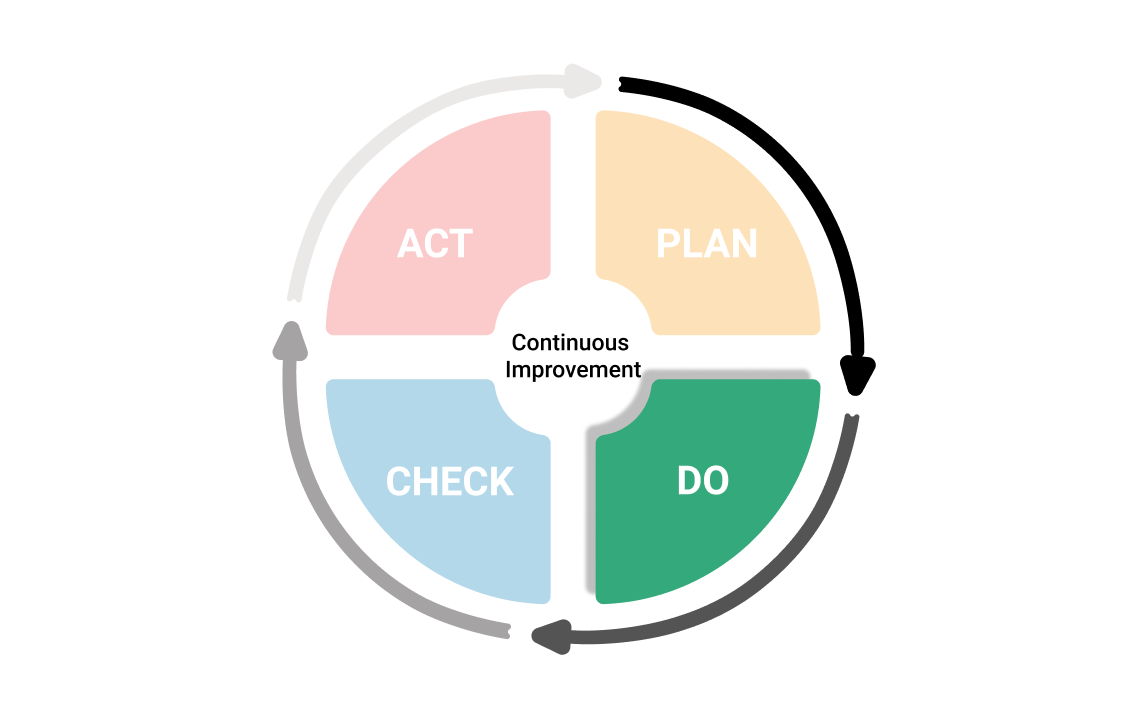 DO Stage of PDCA cycle
DO Stage of PDCA cycle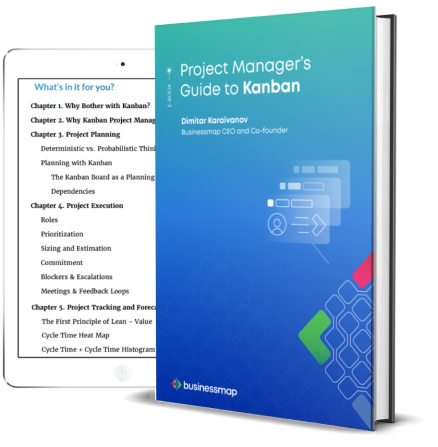
 CHECK stage of PDCA cycle
CHECK stage of PDCA cycle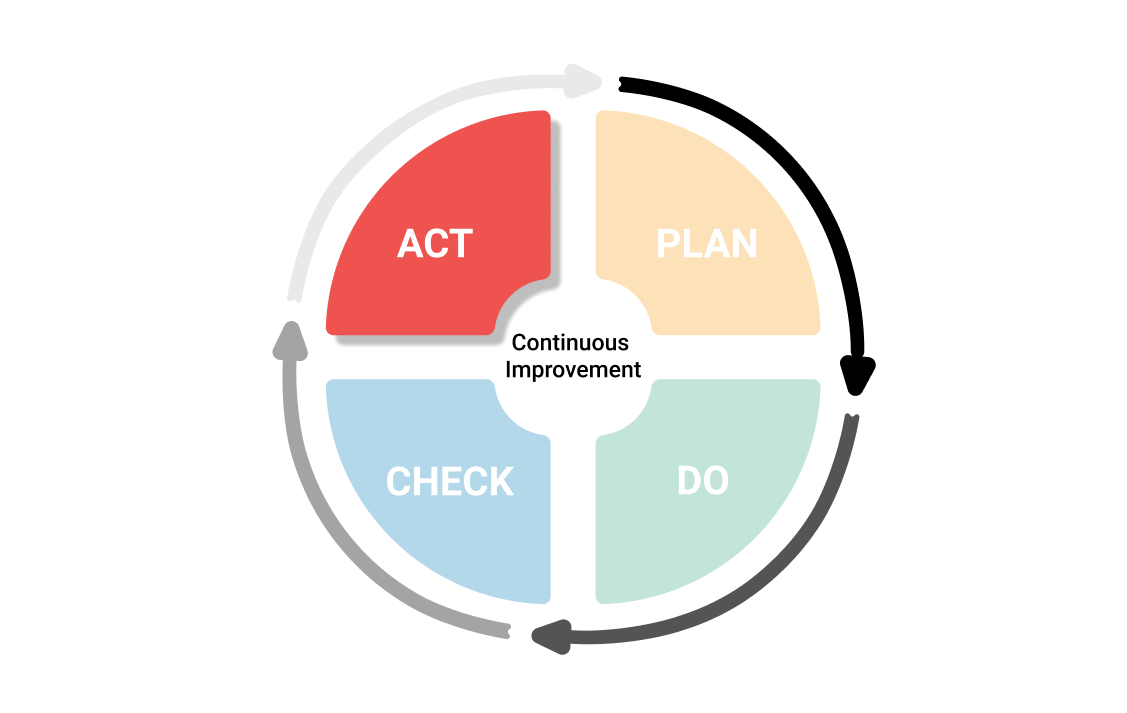 ACT stage of PDCA cycle
ACT stage of PDCA cycle
